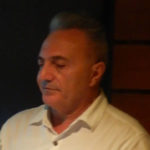D Anusca, F Poenaru, R Muresan (Craiova, Roumanie)
Introduction : Existe-t-il un consensus dans la littérature pour définir et traiter les infections :
• Récentes dans les 3 premières semaines post-opératoire
• Tardives après ce délai.
Matériel et méthode :
Diagnostic: Clinique (criteres MSIS), Immagistique, Testes sérologiques, Moléculaires.
Récent: 3 cas : le nettoyage chirurgicale répétée, l’application du Stimulan (phosphate calcium) en perlage selon ABG avec Vancomicine et Gentamicine peut maintenir sur place la prothèse + vaccin.
Tardive : 10 cas :
Obligatoire l’ablation d’implants. Le dépistage du germe pathogénique est difficile parfois mais obligatoire. Le CRP, le niveau du vitamine D, la présence de fistule ne signifie la connaissance du vrai germe pathologique. La SONICATION répétée peut décelée le vrai germe (sinon l’étude génétique de particules tombes après la Sonication).
L’Autovaccin paraît très important parce que l’immunité développée du germe dépend du statut général de l’organisme. L’autovaccin préparé du germe a tenu a 80° (pour staphylococcus or piocianic) injecté après la désensibilisation progressive jusqu’à 1ml, 1ml par jour (21 jours) associé avec l’antibioticothérapie 6 semaines (Linezolyde iv) et orale 4 semaines, avec chirurgie minutieuses d’ablation d’implant et nettoyage rigoureux peut normaliser le CRP, VSH et Fibrinogen.
Le Stimulan dans les canaux osseux peut guérir l’ostéomyélite secondaire (reprise en 2 temps). Le spacer articulaire mécanique est obligatoire. Quand on connaît le germe et lui n’est pas virulent (reprise 1 temps).
Discussion : La Sonication répète, l’AUTOVACCIN, le STIMULAN, peuvent devenir des vraies clés de la réussite chirurgicale avec guérison.
Conclusions : Intervention extrêmement encourageante et sûre utilisant L’autovaccin et Stimulan.
Introduction : There is a medical statement concerning the definition and classification of infections:
– Early infections <3 weeks after surgery
– Delayed infections developed over this period.
Matherial and methods :
Diagnostic : Clinical (MSIS criteria), Imagistic tests, Serological tests, Molecular tests.
Early infections: 3 cases : The treatment involves surgical sanitization, Stimulan application (calcium phosphate beads) intraoperative according to the antibiogram with vancomycin and gentamicin + Autovaccin.
Delayed infections : 10 cases : Removing the implants is required, identification of the germ being difficult frequently,CRP, vitamin D level and the presence of fistula do not show the real pathogen agent. Repeated sonication can identify the germ, and if that isn’t possible we can study the genetic markers of the particles fallen in the process of sonication.
The autovaccine prepared from the latent germs at 80°C (staphylococcus, piocianic bacteria), injected after progressive desensitization up to 1 ml/day for 21 days followed by antibiotic therapy for 6 weeks and removing the implant with a thorough sanitization can normalize the CRP, ESR and fibrinogen levels.
Stimulan application in the bone canal can heal secondary osteomyelitis (two step surgical approach). Articular spacers is required. When the pathogen agent is identified and it’s not agressive, the one step surgery can be approached.
Discussion : Repeated SONICATION, the AUTOVACCIN and the use of STIMULAN can become true keys to a great surgery outcome.
Conclusions : Due to the use of STIMULAN and AUTOVACCINE the surgical team can now hope to a great success of cured cases.


